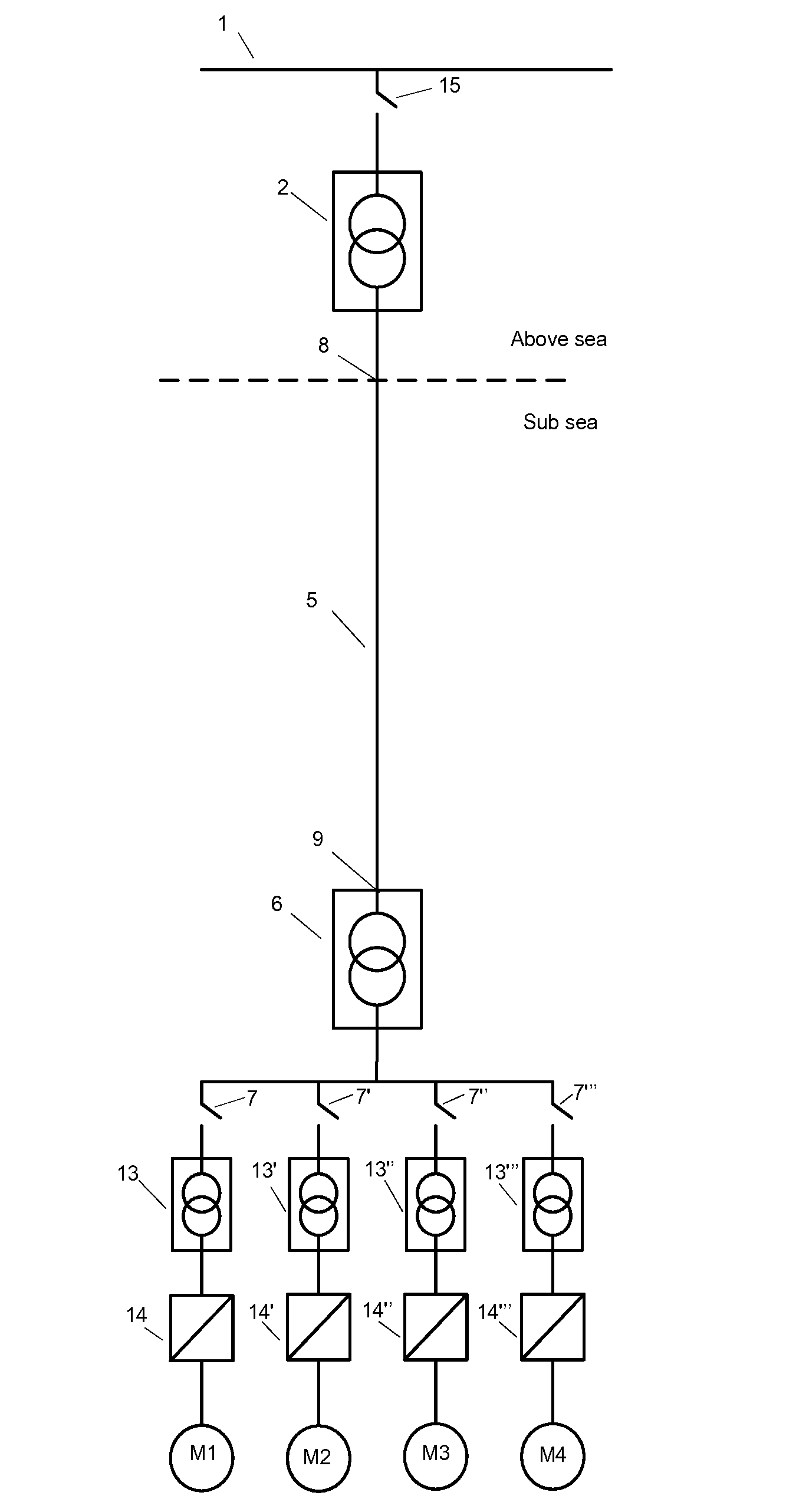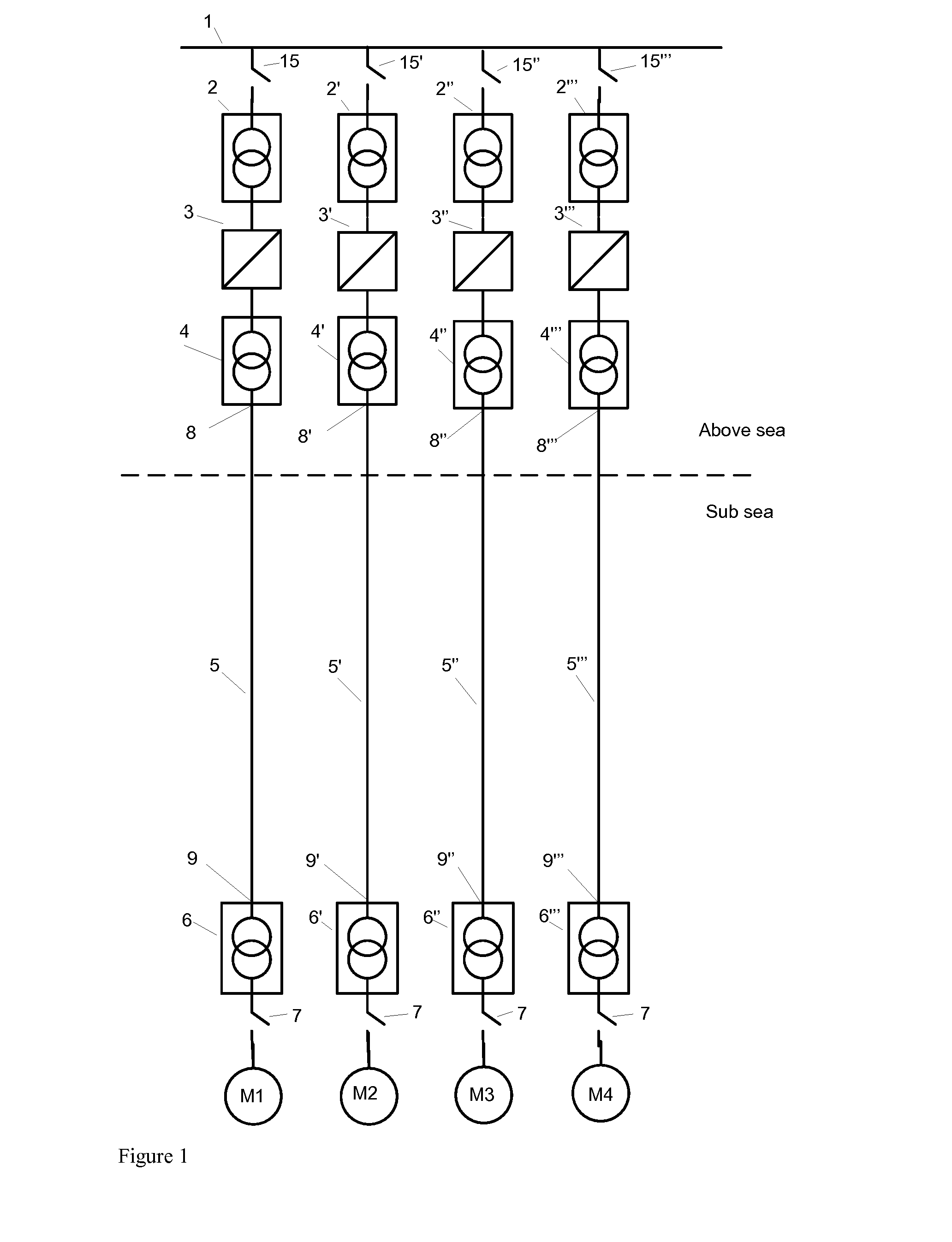Device for stable subsea electric power transmission to run subsea high speed motors or other subsea loads
a high-speed motor and electric power technology, applied in the direction of sea energy generation, ac network voltage adjustment, ac network circuit arrangement, etc., can solve the problems of limited oil quantity, no subsea installation and operation, and the disadvantage of long step-out of transmission cables per motor
- Summary
- Abstract
- Description
- Claims
- Application Information
AI Technical Summary
Benefits of technology
Problems solved by technology
Method used
Image
Examples
Embodiment Construction
with Frequency Step-Up to Run AC Motors
[0068]An embodiment of the invention, the Fourth Solution is shown in FIGS. 4 and 5. The main feature of the embodiment is introduction of a subsea frequency step up or step down device, in the illustrated embodiment a frequency step-up device (FSD) located subsea at the far end of the transmission cable and at a short distance to the motors that runs the compressors and pumps. Short distance means in this context near enough to keep acceptable the ohmic resistance drop and thereby power loss between the generator / FSD and the motors, and it also means short enough to avoid problems caused by Ferranti effect and instability. It is important to note that the subsea FSDs are not directly controlling the frequency to suit the operational speed of motors by having a local control system that adjusts the speed according to needs. The variation of speed according to steady state production need, start and stop and ramping speed down and up, is done by...
PUM
 Login to View More
Login to View More Abstract
Description
Claims
Application Information
 Login to View More
Login to View More - R&D
- Intellectual Property
- Life Sciences
- Materials
- Tech Scout
- Unparalleled Data Quality
- Higher Quality Content
- 60% Fewer Hallucinations
Browse by: Latest US Patents, China's latest patents, Technical Efficacy Thesaurus, Application Domain, Technology Topic, Popular Technical Reports.
© 2025 PatSnap. All rights reserved.Legal|Privacy policy|Modern Slavery Act Transparency Statement|Sitemap|About US| Contact US: help@patsnap.com



